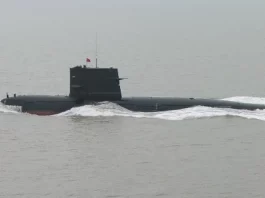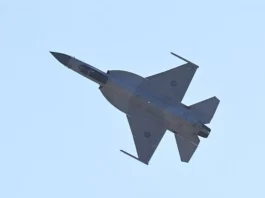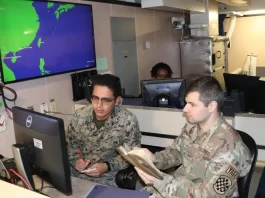The Japanese Ministry of Defense stated on September 18 that the Chinese aircraft carrier CNS Liaoning had entered the contiguous zone of the territorial waters of the archipelago, specifically between Yonaguni and the Iriomote Islands (Okinawa Prefecture), to reach the Western Pacific. The Type 052D destroyers “Chengdu” and “Huainan” are also included.
In contrast to what is typically observed, this Chinese naval group appears to be modest. In reality, the missions it is assigned determine its composition. The CNS Liaoning may have been used for the initial trials of the J-31/35, a new fighter bomber classified as “fifth generation” and based on a carrier. CCTV, a Chinese state television channel, recently transmitted images of one of these aircraft on the carrier’s flight deck.
CNS Liaoning was not the sole Chinese aircraft carrier to depart last week. The CNS Shandong also departed from the Yulin Naval Base on Hainan Island and proceeded toward the South China Sea. Within its carrier group, it engaged in “combat exercises” to prepare a group of new pilots for nighttime operations.
Additionally, the CNS Shandong had a busy summer, with two deployments in the Philippine Sea. During one of these deployments, the US Navy lacked carrier strike groups in the Indo-Pacific region due to the temporary deployment of the USS Abraham Lincoln to the Middle East.
The Chinese Communist Party (CCP)-affiliated “The Global Times” reported that an imposing Type 075 amphibious assault ship accompanied the CNS Shandong. Its specifications (205 meters in length and 40,000 tons) are comparable to those of the Wasp-class aircraft carriers of the United States Navy. This had never been observed before.
It is not uncommon for China to have two aircraft carriers at sea simultaneously. Now there are three of them at sea at a time. This capability was exclusively available to the United States Navy until recently. That is no longer the case.
While the CNS Liaoning and CNS Shandong were operating in the Western Pacific and the South China Sea, respectively, CNS Fujian, the third Chinese aircraft carrier, departed for its fourth round of sea trials, presumably in the Yellow Sea.
Recall that the construction of the CNS Fujian used a CATOBAR (Catapult Assisted Take-Off But Arrested Recovery) configuration, utilizing electromagnetic catapults and arrestor wires, akin to those on French and American carriers. It has a displacement of at least 80,000 tons and a length of 320 meters. Conversely, the CNS Liaoning and CNS Shandong equip their flight decks with ski jumps, a STOBAR configuration, instead of catapults.
The People’s Liberation Army Navy (PLAN) has achieved a new milestone by deploying three aircraft carriers at the same time, even though the CNS Fujian is still not completely operational. The next goal is to deploy three entire carrier strike groups at once, which, given China’s rate of growth and the number of ships it commissions each year, is likely to occur shortly. The ultimate phase will be to have all three ships cruise together as the US Navy did in 2017 when it united the carrier strike groups of the USS Ronald Reagan, USS Nimitz, and USS Theodore Roosevelt in the Western Pacific.






